Hsv 2 blisters. Comprehensive Guide to Understanding Genital Herpes: Symptoms, Causes, and Treatments
What are the symptoms of genital herpes? What causes this viral infection? How is genital herpes treated? Get the answers to these questions and more in this in-depth article.
Understanding Herpes Simplex Virus (HSV)
Herpes simplex virus (HSV) is a common viral infection that can cause painful blisters or ulcers. There are two main types of HSV: HSV-1 and HSV-2. HSV-1 primarily spreads through oral contact and causes infections around the mouth, often known as “cold sores.” HSV-2, on the other hand, is typically transmitted through sexual contact and is the main cause of genital herpes.
Symptoms of Genital Herpes
Most people with genital herpes have no symptoms or only mild symptoms. However, some may experience painful blisters or ulcers around the genitals, anus, or surrounding areas. The first outbreak of genital herpes can also cause fever, body aches, and swollen lymph nodes. Recurrent outbreaks are usually shorter and less severe than the initial infection.

Causes of Genital Herpes
Genital herpes is primarily caused by the HSV-2 virus, which is transmitted through skin-to-skin contact, often during sexual activity. The virus can also be transmitted from someone with oral herpes (HSV-1) to the genital area through oral-genital contact. Individuals with genital herpes have an increased risk of acquiring and transmitting HIV.
Diagnosis and Testing for Genital Herpes
Genital herpes is typically diagnosed through a physical examination and laboratory tests, such as a viral culture or blood test. These tests can confirm the presence of the HSV virus and distinguish between HSV-1 and HSV-2 infections.
Treatment Options for Genital Herpes
While there is no cure for genital herpes, various medications are available to manage the symptoms and reduce the frequency and severity of outbreaks. Antiviral drugs, such as acyclovir, valacyclovir, and famciclovir, are commonly prescribed to treat both initial and recurrent episodes of genital herpes.
Living with Genital Herpes
Although genital herpes can be a lifelong condition, most people with the infection are able to manage their symptoms and live fulfilling lives. It’s important to practice safe sex, inform partners about the infection, and seek support from healthcare providers and support groups as needed.

Can genital herpes be transmitted even without visible symptoms?
Yes, it is possible to transmit genital herpes even when there are no visible symptoms. The virus can still be shed from the skin and transmitted to a partner during this asymptomatic period.
How effective are antiviral medications in treating genital herpes?
Antiviral medications, such as acyclovir, valacyclovir, and famciclovir, are generally effective in reducing the severity and duration of genital herpes outbreaks. They can also help to prevent or reduce the frequency of recurrent episodes.
Does genital herpes increase the risk of acquiring HIV?
Yes, genital herpes can increase the risk of acquiring and transmitting HIV. The breaks in the skin caused by herpes sores can provide an entry point for the HIV virus, making individuals with genital herpes more susceptible to HIV infection.
How can I reduce the risk of transmitting genital herpes to my partner?
To reduce the risk of transmitting genital herpes, it’s important to avoid sexual contact during outbreaks, use condoms consistently, and discuss the infection with your partner. Taking antiviral medication can also help lower the risk of transmission.

Can genital herpes be passed from mother to child during pregnancy?
Yes, it is possible for a mother with genital herpes to transmit the virus to her baby during pregnancy, labor, or delivery. However, the risk can be reduced through antiviral medication and careful monitoring by a healthcare provider.
How can I cope with the emotional impact of a genital herpes diagnosis?
Receiving a genital herpes diagnosis can be emotionally challenging, but it’s important to remember that the infection is common and manageable. Seeking support from a healthcare provider, counselor, or support group can help individuals cope with the emotional impact and stigma associated with the condition.
Herpes simplex virus
Herpes simplex virus
- All topics »
- A
- B
- C
- D
- E
- F
- G
- H
- I
- J
- K
- L
- M
- N
- O
- P
- Q
- R
- S
- T
- U
- V
- W
- X
- Y
- Z
- Resources »
- Fact sheets
- Facts in pictures
- Multimedia
- Publications
- Questions & answers
- Tools and toolkits
- Popular »
- Air pollution
- Coronavirus disease (COVID-19)
- Hepatitis
- Monkeypox
- All countries »
- A
- B
- C
- D
- E
- F
- G
- H
- I
- J
- K
- L
- M
- N
- O
- P
- Q
- R
- S
- T
- U
- V
- W
- X
- Y
- Z
- Regions »
- Africa
- Americas
- South-East Asia
- Europe
- Eastern Mediterranean
- Western Pacific
- WHO in countries »
- Statistics
- Cooperation strategies
- Ukraine emergency
- All news »
- News releases
- Statements
- Campaigns
- Commentaries
- Events
- Feature stories
- Speeches
- Spotlights
- Newsletters
- Photo library
- Media distribution list
- Headlines »
- Focus on »
- Afghanistan crisis
- COVID-19 pandemic
- Northern Ethiopia crisis
- Syria crisis
- Ukraine emergency
- Monkeypox outbreak
- Greater Horn of Africa crisis
- Latest »
- Disease Outbreak News
- Travel advice
- Situation reports
- Weekly Epidemiological Record
- WHO in emergencies »
- Surveillance
- Research
- Funding
- Partners
- Operations
- Independent Oversight and Advisory Committee
- WHO’s Health Emergency Appeal 2023
- Data at WHO »
- Global Health Estimates
- Health SDGs
- Mortality Database
- Data collections
- Dashboards »
- COVID-19 Dashboard
- Triple Billion Dashboard
- Health Inequality Monitor
- Highlights »
- Global Health Observatory
- SCORE
- Insights and visualizations
- Data collection tools
- Reports »
- World Health Statistics 2022
- COVID excess deaths
- DDI IN FOCUS: 2022
- About WHO »
- People
- Teams
- Structure
- Partnerships and collaboration
- Collaborating centres
- Networks, committees and advisory groups
- Transformation
- Our Work »
- General Programme of Work
- WHO Academy
- Activities
- Initiatives
- Funding »
- Investment case
- WHO Foundation
- Accountability »
- Audit
- Programme Budget
- Financial statements
- Programme Budget Portal
- Results Report
- Governance »
- World Health Assembly
- Executive Board
- Election of Director-General
- Governing Bodies website
- Member States Portal
- Home/
- Newsroom/
- Fact sheets/
- Detail/
- Herpes simplex virus
Key facts
- An estimated 3.
 7 billion people under age 50 (67%) globally have herpes simplex virus type 1 (HSV-1) infection, the main cause of oral herpes.
7 billion people under age 50 (67%) globally have herpes simplex virus type 1 (HSV-1) infection, the main cause of oral herpes. - An estimated 491 million people aged 15–49 (13%) worldwide have herpes simplex virus type 2 (HSV-2) infection, the main cause of genital herpes.
- Most HSV infections are asymptomatic or unrecognized, but symptoms of herpes include painful blisters or ulcers that can recur over time.
- Infection with HSV-2 increases the risk of acquiring and transmitting HIV infection.
Overview
Herpes simplex virus (HSV), known as herpes, is a common infection that can cause painful blisters or ulcers. It primarily spreads by skin-to-skin contact. It is treatable but not curable.
There are two types of herpes simplex virus.
Type 1 (HSV-1) mostly spreads by oral contact and causes infections in or around the mouth (oral herpes or cold sores). It can also cause genital herpes. Most adults are infected with HSV-1.
Type 2 (HSV-2) spreads by sexual contact and causes genital herpes.
Most people have no symptoms or only mild symptoms. The infection can cause painful blisters or ulcers that can recur over time. Medicines can reduce symptoms but can’t cure the infection.
Recurrent symptoms of both oral and genital herpes may be distressing. Genital herpes may also be stigmatizing and have an impact on sexual relationships. However, in time, most people with either kind of herpes adjust to living with the infection.
Symptoms
Most people with herpes have no symptoms or only mild symptoms. Many people aren’t aware they have the infection and can pass along the virus to others without knowing.
Symptoms can include painful, recurring blisters or ulcers. New infections may cause fever, body aches and swollen lymph nodes.
Symptoms may be different during the first episode (or ‘outbreak’) of infection than during a recurrent episode. If symptoms occur, they often begin with tingling, itching or burning near where the sores will appear.
Common oral herpes symptoms include blisters (cold sores) or open sores (ulcers) in or around the mouth or lips.
Common genital herpes symptoms include bumps, blisters, or open sores (ulcers) around the genitals or anus.
These sores and blisters are typically painful. Blisters may break open, ooze and then crust over.
During their first infection, people may experience:
- fever
- body aches
- sore throat (oral herpes)
- headache
- swollen lymph nodes near the infection.
People can have repeated outbreaks over time (‘recurrences’). These are usually shorter and less severe than the first outbreak.
Treatment
Medicines are often used to treat first or recurrent episodes of herpes. They can decrease how long symptoms last and how severe they are, but they can’t cure the infection.
Treatment for recurrent episodes is most effective when started within 48 hours of when symptoms begin.
Antiviral medicines commonly given include acyclovir, famciclovir and valacyclovir.
Taking a lower daily dose of one of these medicines can also decrease how often symptoms occur (‘outbreaks’).
Treatment is often recommended for people who get very painful or frequent recurrent episodes or who want to lower the risk of giving herpes to someone else.
Medicines to help with pain related to sores include paracetamol (acetaminophen), naproxen or ibuprofen. Medicines that can be applied to numb the affected area include benzocaine and lidocaine.
Herpes simplex virus lives inside of nerve cells and alternates between being inactive and active. Certain triggers can make the virus active including:
- illness or fever
- sun exposure
- menstrual period
- injury
- emotional stress
- surgery.
For people whose oral herpes is activated by sunlight, avoiding sun exposure and wearing sunscreen can lower the risk of recurrences.
To decrease symptoms of oral herpes, people can:
- drink cold drinks or suck on popsicles
- use over-the-counter pain medicines.
For genital herpes, people can:
- sit in a warm bath for 20 minutes (without soap)
- wear loose fitting clothes
- use over-the-counter pain medicines.
There are ways to lower the risk of spreading herpes including:
- talk to your partner about having herpes
- don’t have sex if you have symptoms and always wear a condom
- don’t share items that touched saliva (oral herpes).
Talk to your healthcare provider if you are pregnant, because there is a risk of passing herpes to your baby.
Scope of the problem
In 2016 (last available estimates), 3.7 billion people under the age of 50, or 67% of the global population, had HSV-1 infection (oral or genital). Most HSV-1 infections are acquired during childhood.
Most HSV-1 infections are acquired during childhood.
Genital herpes caused by HSV-2 affects an estimated 491 million (13%) people aged 15–49 years worldwide (2016 data). HSV-2 infects women almost twice as often as men because sexual transmission is more efficient from men to women. Prevalence increases with age, though the highest number of new infections are in adolescents.
Transmission
HSV-1 is mainly transmitted via contact with the virus in sores, saliva or surfaces in or around the mouth. Less commonly, HSV-1 can be transmitted to the genital area through oral-genital contact to cause genital herpes. It can be transmitted from oral or skin surfaces that appear normal; however, the greatest risk of transmission is when there are active sores. People who already have HSV-1 are not at risk of reinfection, but they are still at risk of acquiring HSV-2.
HSV-2 is mainly transmitted during sex through contact with genital or anal surfaces, skin, sores or fluids of someone infected with the virus._gets_underway_with_a_tethered_TIF-25K_Aerostat_balloon_in_Key_West,_Fla.,_on_April_24,_2013_130424-N-IC228-112.jpg) HSV-2 can be transmitted even if the skin looks normal and is often transmitted in the absence of symptoms.
HSV-2 can be transmitted even if the skin looks normal and is often transmitted in the absence of symptoms.
In rare circumstances, herpes (HSV-1 and HSV-2) can be transmitted from mother to child during delivery, causing neonatal herpes.
Possible complications
HSV-2 and HIV infection
HSV-2 infection increases the risk of acquiring HIV infection by approximately three-fold. Additionally, people with both HIV and HSV-2 infection are more likely to spread HIV to others. HSV-2 infection is among the most common infections in people living with HIV.
Severe disease
In immunocompromised people, including those with advanced HIV infection, herpes can have more severe symptoms and more frequent recurrences. Rare complications of HSV-2 include meningoencephalitis (brain infection) and disseminated infection. Rarely, HSV-1 infection can lead to more severe complications such as encephalitis (brain infection) or keratitis (eye infection).
Neonatal herpes
Neonatal herpes can occur when an infant is exposed to HSV during delivery.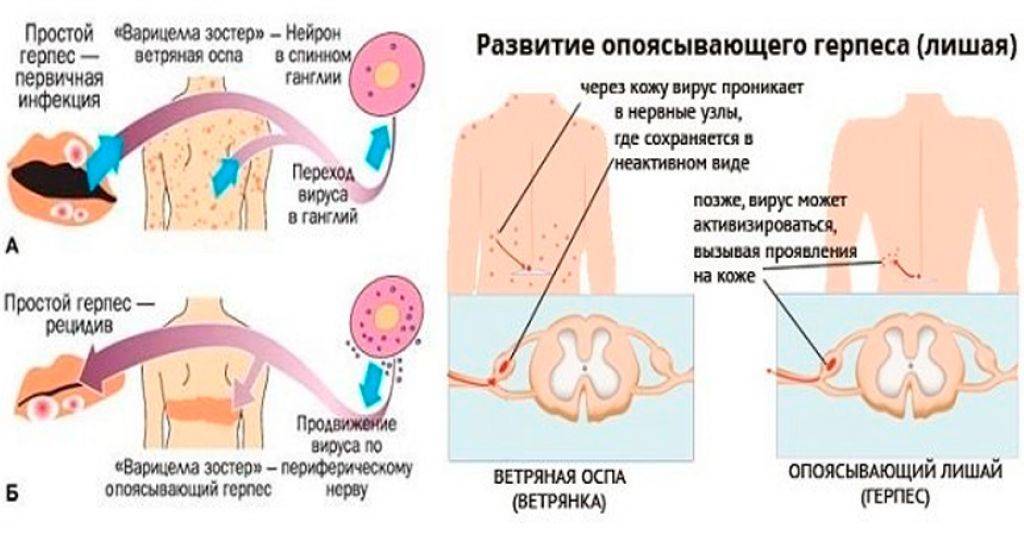 Neonatal herpes is rare, occurring in an estimated 10 out of every 100 000 births globally. However, it is a serious condition that can lead to lasting neurologic disability or death. The risk for neonatal herpes is greatest when a mother acquires HSV for the first time in late pregnancy.
Neonatal herpes is rare, occurring in an estimated 10 out of every 100 000 births globally. However, it is a serious condition that can lead to lasting neurologic disability or death. The risk for neonatal herpes is greatest when a mother acquires HSV for the first time in late pregnancy.
Prevention
People with symptoms of oral herpes should avoid oral contact with others (including oral sex) and sharing objects that touched saliva. Individuals with symptoms of genital herpes should abstain from sexual activity while experiencing symptoms. Both HSV-1 and HSV-2 are most contagious when sores are present but can also be transmitted when no symptoms are felt or visible.
For sexually active people, consistent and correct use of condoms is the best way to prevent genital herpes and other STIs. Condoms reduce the risk; however, HSV infection can still occur through contact with genital or anal areas not covered by the condom. Medical male circumcision can provide life-long partial protection against HSV-2 infection, as well as against HIV and human papillomavirus (HPV).
People with symptoms suggestive of genital herpes should be offered HIV testing.
Pregnant women with symptoms of genital herpes should inform their health care providers. Preventing acquisition of HSV-2 infection is particularly important for women in late pregnancy when the risk for neonatal herpes is greatest.
WHO response
WHO is working to increase awareness about HSV infection and its symptoms, improve access to antiviral medications, and promote HIV prevention efforts for those with genital herpes, such as pre-exposure prophylaxis (PrEP).
WHO and partners are also supporting research to develop new strategies for prevention and control of HSV infections, such as vaccines and topical microbicides.
- Global estimates of prevalent and incident Herpes Simplex Virus Type 2 infections in 2012
PLoS ONE 9(12): e114989 - More about sexually transmitted diseases
STD Facts – Genital Herpes
People who are sexually active can get genital herpes, a common sexually transmitted disease (STD).
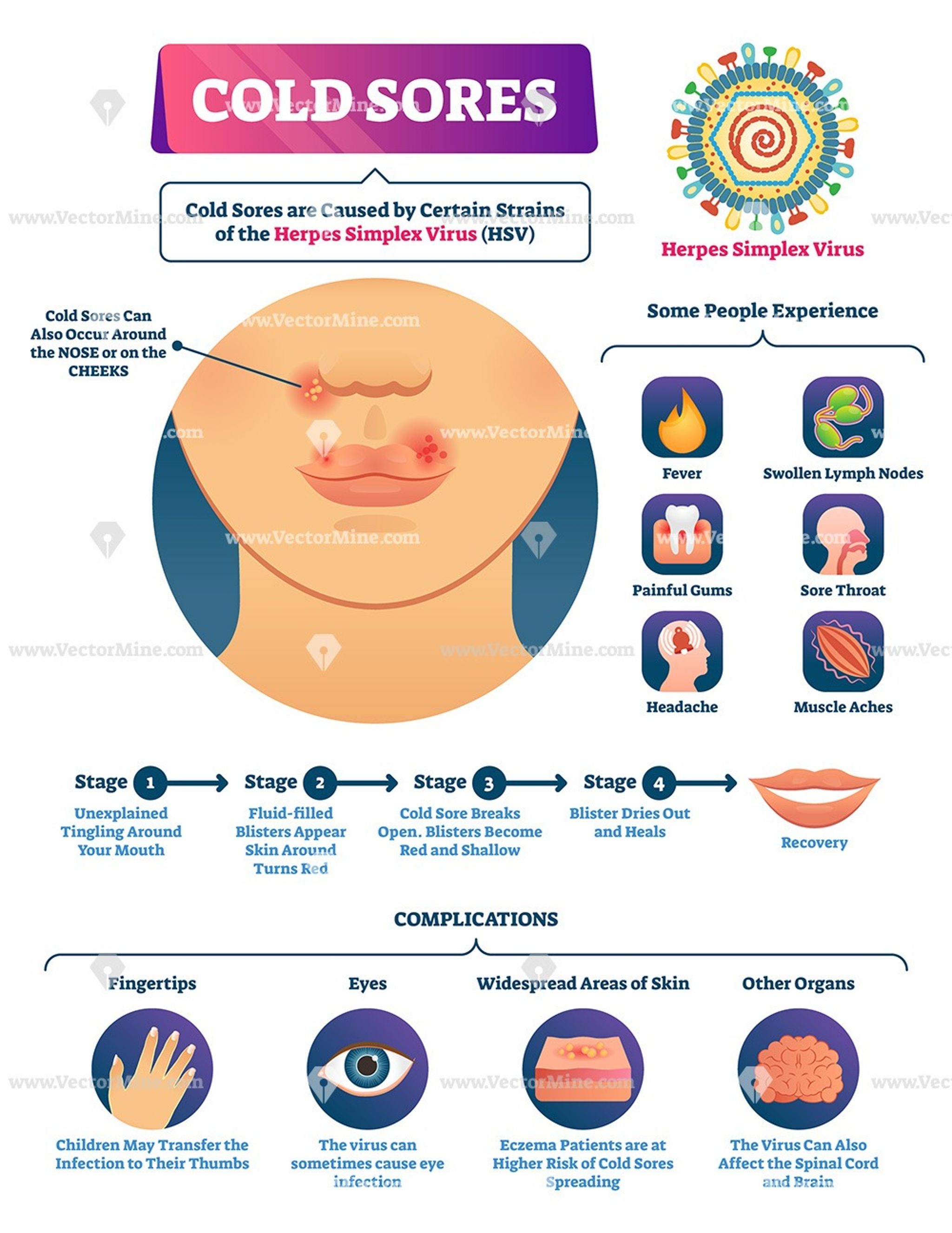 This fact sheet answers basic questions about genital herpes.
This fact sheet answers basic questions about genital herpes.
What is genital herpes?
Genital herpes is an STD caused by two types of viruses – herpes simplex virus type 1 (HSV-1) and herpes simplex virus type 2 (HSV-2).
What is oral herpes?
HSV-1 often causes oral herpes, which can result in cold sores or fever blisters on or around the mouth. However, most people with oral herpes do not have any symptoms. Most people with oral herpes get it during childhood or young adulthood from non-sexual contact with saliva.
Is there a link between genital herpes and oral herpes?
Yes. Oral herpes caused by HSV-1 can spread from the mouth to the genitals through oral sex. This is why some cases of genital herpes are due to HSV-1.
How common is genital herpes?
Genital herpes is common in the United States. In 2018, CDC estimates show there were 572,000 new genital herpes infections in the United States among people aged 14 to 49.1
How is genital herpes spread?
You can get genital herpes by having vaginal, anal, or oral sex with someone who has the infection.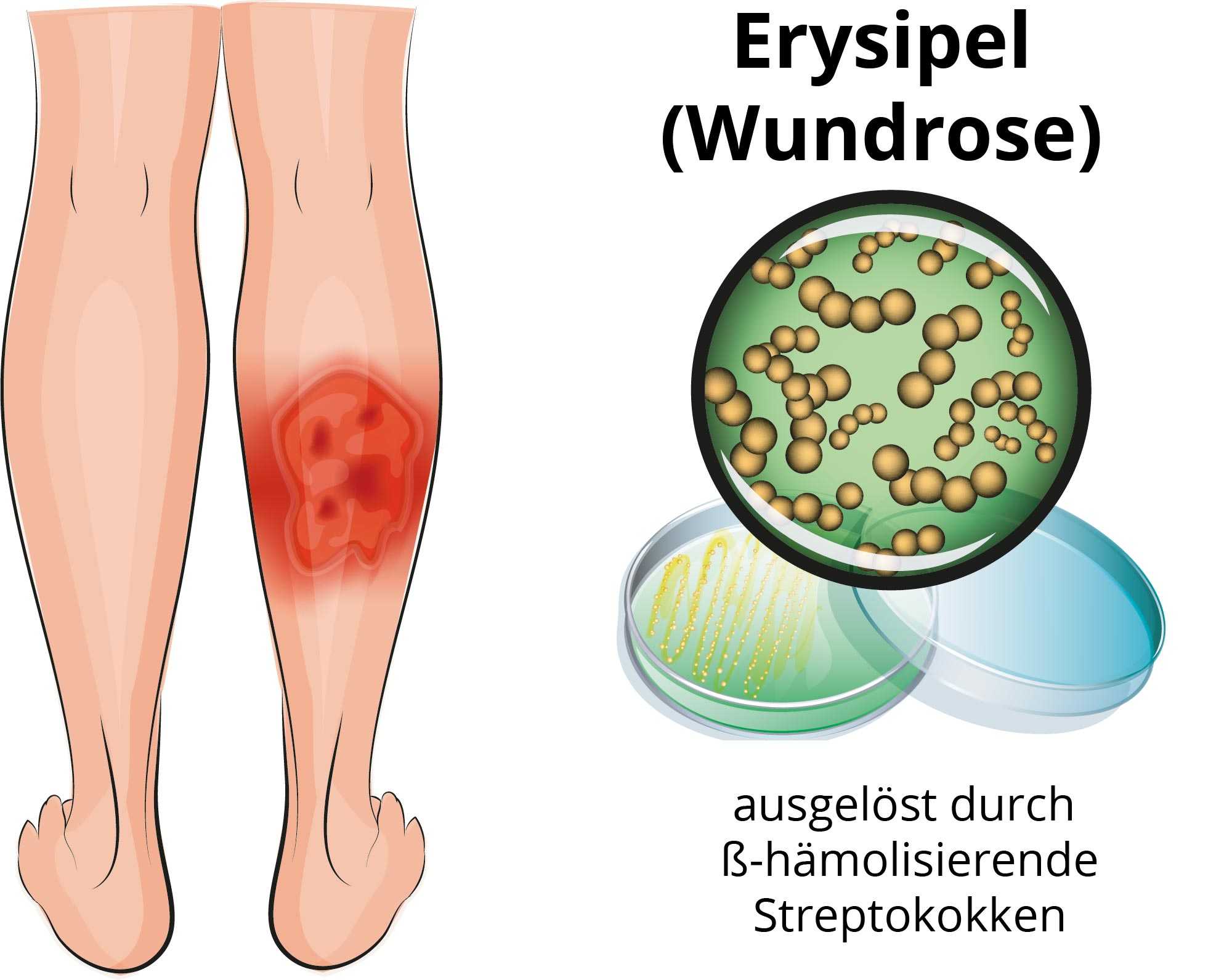 You can get herpes if you have contact with:
You can get herpes if you have contact with:
- A herpes sore;
- Saliva from a partner with an oral herpes infection;
- Genital fluids from a partner with a genital herpes infection;
- Skin in the oral area of a partner with oral herpes; or
- Skin in the genital area of a partner with genital herpes.
You also can get genital herpes from a sex partner who does not have a visible sore or is unaware of their infection. It is also possible to get genital herpes if you receive oral sex from a partner with oral herpes.
You will not get herpes from toilet seats, bedding, or swimming pools. You also will not get it from touching objects, such as silverware, soap, or towels.
If you have more questions about herpes, consider discussing your concerns with a healthcare provider.
How do I know if I have genital herpes?
Most people with genital herpes have no symptoms or have very mild symptoms. Mild symptoms may go unnoticed or be mistaken for other skin conditions like a pimple or ingrown hair.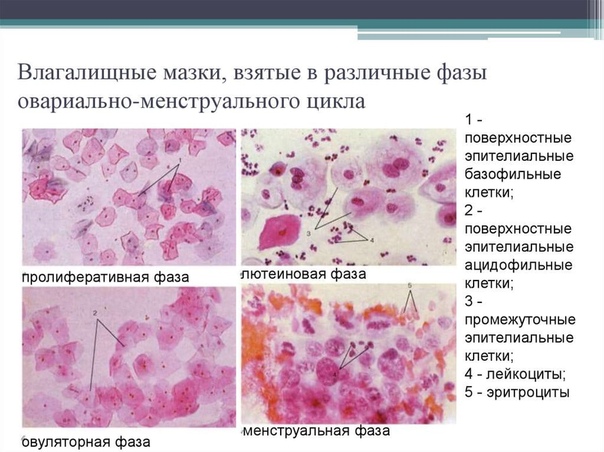 Because of this, most people do not know they have a herpes infection.
Because of this, most people do not know they have a herpes infection.
Herpes sores usually appear as one or more blisters on or around the genitals, rectum or mouth. This is known as having an “outbreak”. The blisters break and leave painful sores that may take a week or more to heal. Flu-like symptoms (e.g., fever, body aches, or swollen glands) also may occur during the first outbreak.
People who experience an initial outbreak of herpes can have repeated outbreaks, especially if they have HSV-2. However, repeat outbreaks are usually shorter and less severe than the first outbreak. Although genital herpes is a lifelong infection, the number of outbreaks may decrease over time.
Ask a healthcare provider to examine you if:
- You notice any symptoms; or
- Your partner has an STD or symptoms of an STD.
STD symptoms can include an unusual sore, a smelly genital discharge, burning when peeing, or bleeding between periods (if you have a menstrual cycle).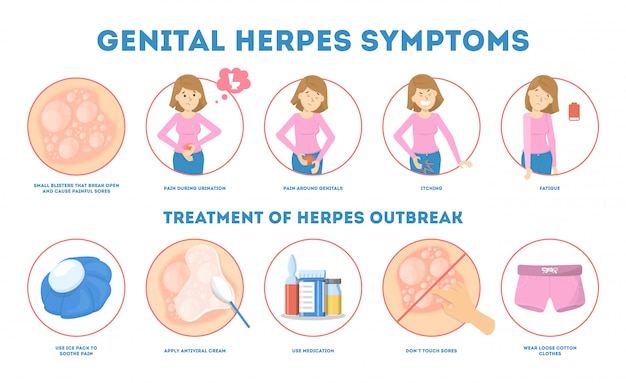
How will my healthcare provider know if I have genital herpes?
Your healthcare provider may diagnose genital herpes by simply looking at any sores that are present. Providers can also take a sample from the sore(s) and test it. If sores are not present, a blood test may be used to look for HSV antibodies.
Have an honest and open talk with your healthcare provider about herpes testing and other STDs.
Please note: A herpes blood test can help determine if you have herpes infection. It cannot tell you who gave you the infection or when you got the infection.
How can I prevent genital herpes?
The only way to completely avoid STDs is to not have vaginal, anal, or oral sex.
If you are sexually active, you can do the following things to lower your chances of getting genital herpes:
- Being in a long-term mutually monogamous relationship with a partner who does not have herpes.
- Using condoms the right way every time you have sex.
Be aware that not all herpes sores occur in areas that a condom can cover. Also, the skin can release the virus (shed) from areas that do not have a visible herpes sore. For these reasons, condoms may not fully protect you from getting herpes.
Also, the skin can release the virus (shed) from areas that do not have a visible herpes sore. For these reasons, condoms may not fully protect you from getting herpes.
If your sex partner(s) has/have genital herpes, you can lower your risk of getting it if:
- Your partner takes an anti-herpes medicine every day. This is something your partner should discuss with his or her healthcare provider.
- You avoid having vaginal, anal, or oral sex when your partner has herpes symptoms (i.e., during an “outbreak”).
Is there a cure for genital herpes?
There is no cure for genital herpes. However, there are medicines that can prevent or shorten outbreaks. A daily anti-herpes medicine can make it less likely to pass the infection on to your sex partner(s).
What happens if I don’t receive treatment?
Genital herpes can cause painful genital sores and can be severe in people with suppressed immune systems.
If you touch your sores or fluids from the sores, you may transfer herpes to another body part like your eyes. Do not touch the sores or fluids to avoid spreading herpes to another part of your body. If you do touch the sores or fluids, quickly wash your hands thoroughly to help avoid spreading the infection.
Do not touch the sores or fluids to avoid spreading herpes to another part of your body. If you do touch the sores or fluids, quickly wash your hands thoroughly to help avoid spreading the infection.
If you are pregnant, there can be problems for you and your unborn fetus, or newborn baby. See “I’m pregnant. How could genital herpes affect my baby?” for information about this.
I’m pregnant. How could genital herpes affect my baby?
If you are pregnant and have genital herpes, prenatal care visits are very important. Some research suggest that a genital herpes infection may lead to miscarriage or make it more likely to deliver your baby too early. You can pass herpes to your unborn child before birth, but it more commonly passes during delivery. This can lead to a deadly infection in your baby (called neonatal herpes). It is important that you avoid getting genital herpes during pregnancy. Tell your healthcare provider if you have ever had a genital herpes diagnosis or symptoms. Also tell them about any possible exposure to genital herpes.
Also tell them about any possible exposure to genital herpes.
If you have genital herpes, you may need to take anti-herpes medicine towards the end of your pregnancy. This medicine may reduce your risk of having signs or symptoms of genital herpes when you deliver. At the time of delivery, your healthcare provider should carefully examine you for herpes sores. If you have signs or symptoms of genital herpes at delivery, a ‘C-section’ is likely to occur.
Can I still have sex if I have herpes?
If you have herpes, you should talk to your sex partner(s) about their risk. Using condoms may help lower this risk but it will not get rid of the risk completely. Having sores or other symptoms of herpes can increase your risk of spreading the disease. Even if you do not have any symptoms, you can still infect your sex partners.
You may have concerns about how genital herpes will impact your health, sex life, and relationships. While herpes is not curable, it is important to know that it is manageable with medicine.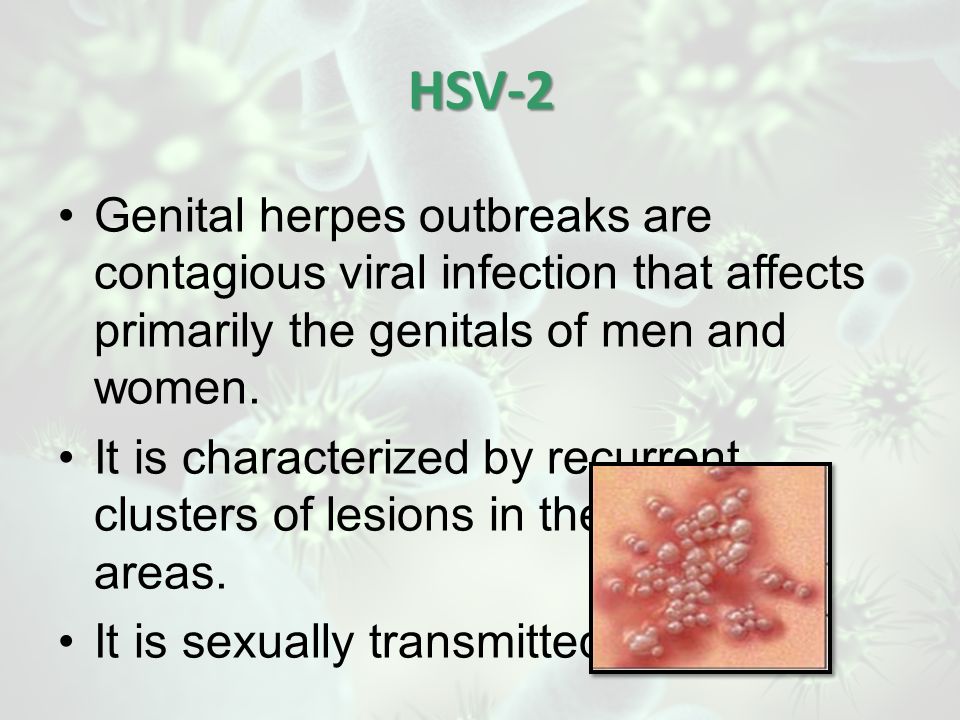 Daily suppressive therapy (i.e., daily use of antiviral medication) can lower your risk of spreading the virus to others. Talk to a healthcare provider about your concerns and treatment options.
Daily suppressive therapy (i.e., daily use of antiviral medication) can lower your risk of spreading the virus to others. Talk to a healthcare provider about your concerns and treatment options.
A genital herpes diagnosis may affect how you will feel about current or future sexual relationships. Knowing how to talk to sexual partners about STDs is important.
What is the link between genital herpes and HIV?
Herpes infection can cause sores or breaks in the skin or lining of the mouth, vagina, and rectum. This provides a way for HIV to enter the body. Even without visible sores, herpes increases the number of immune cells in the lining of the genitals. HIV targets immune cells for entry into the body. Having both HIV and genital herpes increases the chance of spreading HIV to a HIV-negative partner during oral, vagina, or anal sex.
You can add this content to your website by syndicating.
HERPES SIMPLE VIRUS ᐉ Symptoms • Treatment • Causes • Signs • Drugs at Low Price Pharmacy (ANC)
Herpes simplex virus is one of the most common infections in the world. According to the World Health Organization, approximately 60-95% of the world’s population is infected with it. The virus can be asymptomatic in the body for many years.
According to the World Health Organization, approximately 60-95% of the world’s population is infected with it. The virus can be asymptomatic in the body for many years.
The appearance of the characteristic symptoms of herpes is due to exacerbations of the infection. As a rule, they occur when immunity is weakened or under the influence of strong provoking environmental factors. The herpes simplex virus has a short reproduction cycle – only 24 hours. This means that the clinical manifestations of infection appear very quickly, shortly after exposure to a provoking factor.
Characteristics of the virus
There are two types of herpes simplex virus: HSV-1 and HSV-2. The first most often affects the skin of the lips and the area around the mouth, causing the development of the oral form of the disease. The second is the causative agent of genital herpes and provokes the appearance of a herpetic rash in the vulva.
Herpes simplex virus is characterized by chronic persistence in the human body. After the initial infection, he “settles” in the nerve ganglia (nodes), where he lives for many years. An infected person can infect others by airborne droplets, contact-household or sexual contact (the latter is typical for genital herpes).
After the initial infection, he “settles” in the nerve ganglia (nodes), where he lives for many years. An infected person can infect others by airborne droplets, contact-household or sexual contact (the latter is typical for genital herpes).
The frequency of exacerbations varies from person to person. It directly depends on the degree of suppression of the immune system. If some people experience clinical manifestations of herpes once every few years, others may suffer from exacerbations several times a year or even monthly.
Clinical course
Most often, herpes simplex is manifested by the formation of clustered vesicles (vesicles) on reddened, edematous skin. After a few days, they spontaneously open, forming painful erosions. Over time, they heal without leaving any traces behind. On average, the duration of the course of the disease is from 10 to 14 days.
In medical practice, there are:
- Primary herpes simplex is the first clinical episode of the disease that occurs immediately after infection.
 It can develop only once in a lifetime.
It can develop only once in a lifetime. - Herpes simplex recurrence – all subsequent episodes that develop repeatedly in the same person.
According to the nature of the course, herpes can be:
- rarely recurrent – with exacerbations 1-2 times a year;
- moderate – with 3-4 exacerbations per year;
- often recurrent – 6 or more exacerbations per year.
In some cases, herpes can occur in severe bullous or erosive-ulcerative form. And in people with sharply weakened immunities, it can cause serious complications, spreading to other organs.
Women with genital herpes (which belongs to the group of TORCH infections) may become infertile. Herpetic infection can provoke miscarriage, intrauterine infection of the fetus and even death of the child from complications in the first year of life.
Diagnostics and treatment
In most cases, the herpes simplex virus is recognized on the basis of its characteristic manifestations during exacerbations. In some cases, additional research methods are used to confirm the diagnosis – PCR, ELISA, virological methods, etc.
In some cases, additional research methods are used to confirm the diagnosis – PCR, ELISA, virological methods, etc.
The treatment of herpes virus infection differs at different stages. During exacerbations, patients are prescribed antiviral drugs, prostaglandin inhibitors and antioxidants. At the stage of remission, immunomodulators and adaptogens are usually used – agents that strengthen the immune system and thereby reduce the frequency of relapses.
In severe cases, patients can be given specific prophylaxis against exacerbations using special herpes vaccines.
Gerpevir: instruction, price, analogues | tablets Kyivmedpreparat
- Pharmacological properties
- Indications Gerpevir tablets
- Application of Gerpevir tablets
- Contraindications
- Side effects
- Special instructions
- Interactions
- Overdose
- Storage conditions
- Diagnosis
- Recommended alternatives
- Trade names
pharmacodynamics. Aciclovir is a synthetic purine nucleoside analog with inhibitory activity in vivo and in vitro against human herpes virus, which includes herpes simplex virus type I and II, varicella-zoster virus and herpes zoster, Epstein-Barr virus and cytomegalovirus. In cell culture, acyclovir shows the greatest activity against herpes simplex virus type I and then, in descending order of activity, against herpes simplex type II virus, varicella-zoster virus and herpes zoster, Epstein-Barr virus and cytomegalovirus.
Aciclovir is a synthetic purine nucleoside analog with inhibitory activity in vivo and in vitro against human herpes virus, which includes herpes simplex virus type I and II, varicella-zoster virus and herpes zoster, Epstein-Barr virus and cytomegalovirus. In cell culture, acyclovir shows the greatest activity against herpes simplex virus type I and then, in descending order of activity, against herpes simplex type II virus, varicella-zoster virus and herpes zoster, Epstein-Barr virus and cytomegalovirus.
The inhibitory activity of acyclovir against the aforementioned viruses is highly selective. The enzyme thymidine kinase in a normal uninfected cell does not use acyclovir as a substrate, so the toxic effect on host cells is minimal. However, thymidine kinase, encoded in the herpes simplex, varicella-zoster, and Epstein-Barr viruses, converts acyclovir to acyclovir monophosphate, a nucleoside analogue, which is then converted sequentially to diphosphate and triphosphate using cell enzymes. Following integration into viral DNA, acyclovir triphosphate interacts with viral DNA polymerase, resulting in the termination of viral DNA chain synthesis.
Following integration into viral DNA, acyclovir triphosphate interacts with viral DNA polymerase, resulting in the termination of viral DNA chain synthesis.
With long-term or repeated courses of treatment in severely immunocompromised patients, it is possible to reduce the sensitivity of certain strains of the virus that do not always respond to treatment with acyclovir. Most clinical cases of insensitivity are associated with viral thymidine kinase deficiency, but there are reports of damage to viral thymidine kinase and DNA. In vitro interaction of certain herpes simplex viruses with acyclovir may also lead to the formation of less sensitive strains. Relationship between susceptibility of individual herpes simplex viruses in vitro and the clinical results of treatment with acyclovir have not been fully elucidated.
Pharmacokinetics. Acyclovir is partially absorbed in the intestine. The average peak stable concentration (C ssmax ) in plasma after taking a dose of 200 mg with a 4-hour interval is 3. 1 µmol (0.7 µg / ml), respectively, the level in blood plasma (C ssmin ) will be 1.8 µmol (0.4 µg / ml). The corresponding levels of C ssmax after taking doses of 400 mg and 800 mg with a 4-hour interval are 5.3 μmol (1.2 μg / ml) and 8 μmol (1.8 μg / ml), and the equivalent levels of C ssmin – 2.7 µmol (0.6 µg/ml) and 4 µmol (0.9 µg ml).
1 µmol (0.7 µg / ml), respectively, the level in blood plasma (C ssmin ) will be 1.8 µmol (0.4 µg / ml). The corresponding levels of C ssmax after taking doses of 400 mg and 800 mg with a 4-hour interval are 5.3 μmol (1.2 μg / ml) and 8 μmol (1.8 μg / ml), and the equivalent levels of C ssmin – 2.7 µmol (0.6 µg/ml) and 4 µmol (0.9 µg ml).
In adults, the final T ½ with intravenous administration of acyclovir is about 2.9 hours. Most of the drug is excreted unchanged by the kidneys. The renal clearance of acyclovir is significantly higher than the creatinine clearance, which indicates that the excretion of the drug by the kidneys is carried out not only by glomerular filtration, but also by tubular secretion.
9-carboxymethoxymethylguanine is the only important metabolite of acyclovir that can be detected in the urine and accounts for about 10-15% of the administered dose. If acyclovir is used one hour after taking 1 g of probenecid, the final T ½ and AUC increased by 18% and 40%, respectively.
In patients with chronic renal insufficiency, the average final T ½ is 19.5 hours.
The concentration of the drug in cerebrospinal fluid is about 50% of the corresponding concentration in blood plasma. The level of binding to plasma proteins is relatively low (9-33%) and does not change when interacting with other drugs.
With the simultaneous use of acyclovir and zidovudine for the treatment of HIV-infected patients, no changes in the pharmacokinetics of these drugs were detected.
- treatment of viral infections of the skin and mucous membranes caused by the herpes simplex virus, including primary and recurrent genital herpes;
- suppression (prevention of recurrence) of infections caused by the herpes simplex virus in patients with normal immunity;
- prevention of infections caused by the herpes simplex virus in immunocompromised patients;
- Treatment of infections caused by the Varicella zoster virus (chickenpox and herpes zoster).

tablet should be taken whole with water. When using high doses of acyclovir, an adequate level of hydration of the body should be maintained.
Adults
Treatment of infections caused by the herpes simplex virus. For the treatment of infections caused by the herpes simplex virus, it is necessary to take Gerpevir tablets at a dose of 200 mg 5 times a day at approximately 4-hour intervals, except for the night period.
Treatment should be continued for 5 days, but may be continued in case of severe primary infection.
For patients with severe immunodeficiency (eg, after bone marrow transplantation) or for patients with reduced absorption in the intestine, the dose can be doubled to 400 mg or an appropriate dose for IV administration.
Treatment should begin as soon as possible after the onset of infection. In the case of recurrent herpes, it is better to start treatment in the prodromal period or after the first signs of skin lesions appear.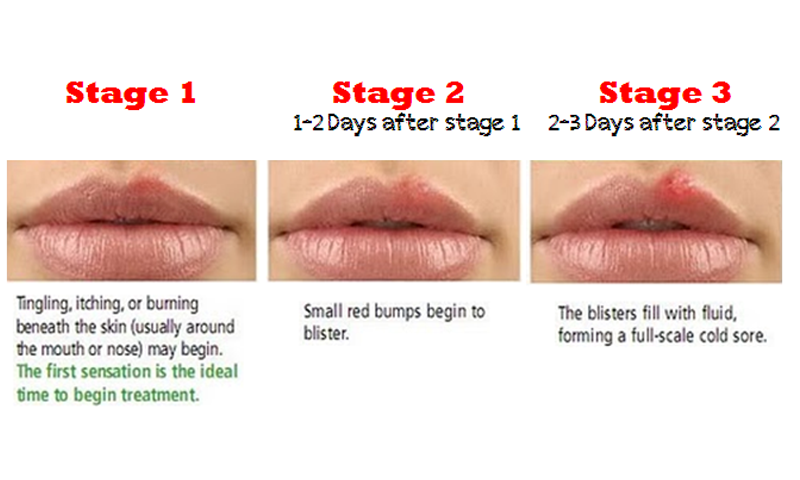
Prevention of recurrence (suppressive therapy) of herpes simplex infections . In patients with normal immunity, to prevent recurrence of infections caused by the herpes simplex virus, Gerpevir tablets at a dose of 200 mg are taken 4 times a day with a 6-hour interval.
For convenience, most patients can take 400 mg of Gerpevir twice a day at 12-hour intervals.
Treatment will be effective even after the dose of Gerpevir tablets is reduced to 200 mg, which is taken 3 times a day with an 8-hour interval or even 2 times a day with a 12-hour interval.
In some patients, a radical improvement is noted after taking a daily dose of Gerpevir 800 mg.
To monitor possible changes in the natural course of the disease, therapy with Gerpevir should be interrupted periodically at intervals of 6-12 months.
Prevention of infections caused by herpes simplex virus . For the prevention of infections caused by the herpes simplex virus, patients with immunodeficiency should take Gerpevir tablets at a dose of 200 mg 4 times a day with a 6-hour interval.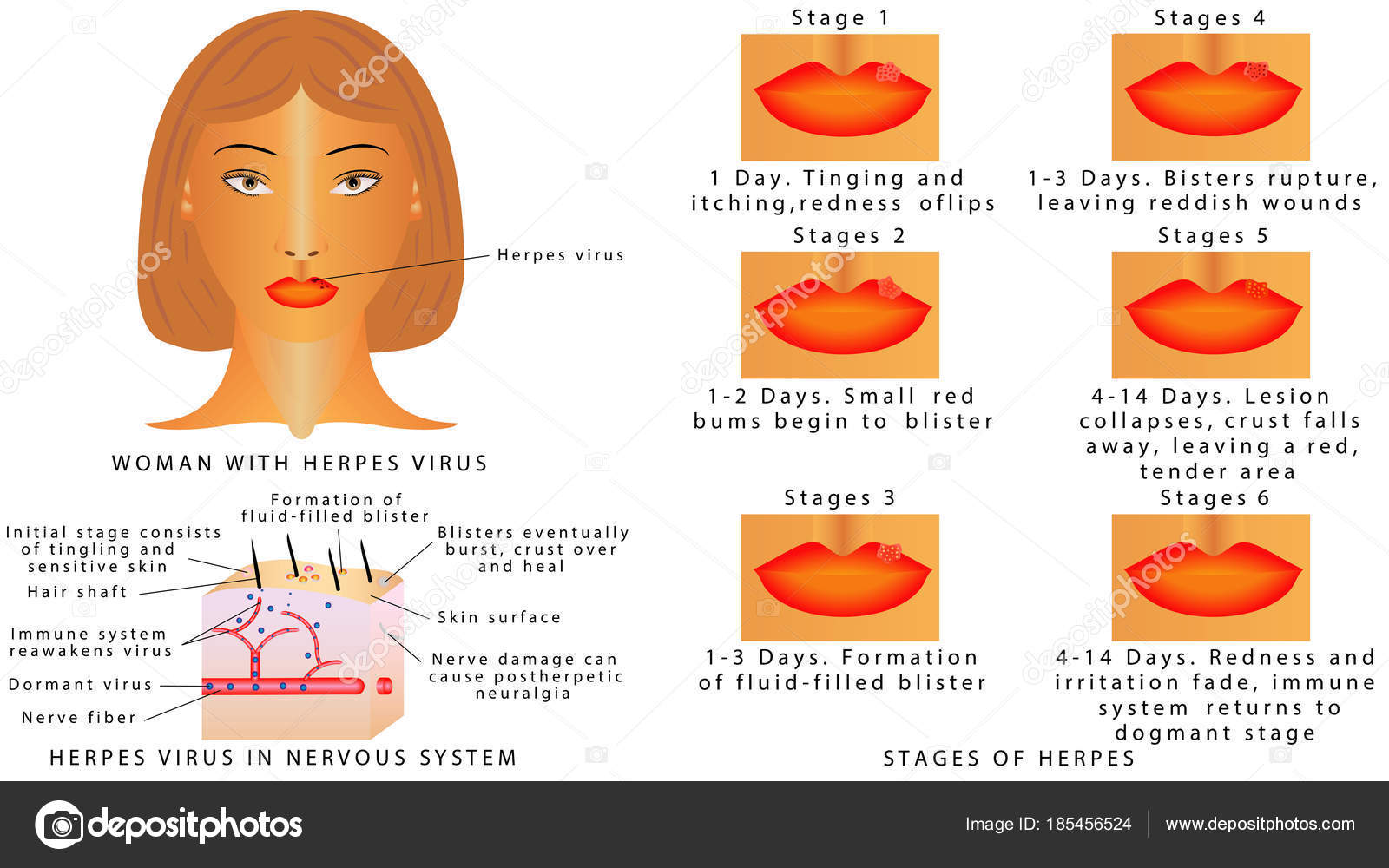 For patients with significant immunodeficiency (for example, after bone marrow transplantation) or in patients with reduced absorption in the intestine, the dose can be doubled to 400 mg or an appropriate dose for intravenous administration.
For patients with significant immunodeficiency (for example, after bone marrow transplantation) or in patients with reduced absorption in the intestine, the dose can be doubled to 400 mg or an appropriate dose for intravenous administration.
The duration of prophylaxis depends on the length of the risk period.
Treatment of chickenpox and herpes zoster . For the treatment of infections caused by varicella-zoster viruses and herpes zoster, Gerpevir tablets should be taken at a dose of 800 mg 5 times a day with a 4-hour interval, except for the night period. Treatment should continue for 7 days.
Patients with severe immunodeficiency (eg after bone marrow transplantation) or patients with reduced absorption in the intestines are better to use / in the introduction.
Treatment should be started as soon as possible after the onset of the disease, the result will be better if treatment is started immediately after the onset of rashes.
Elderly patients . The possibility of impaired renal function in elderly patients should be borne in mind, and the dose for them should be adjusted accordingly (see Renal Insufficiency). It is necessary to maintain an adequate level of hydration of the body.
The possibility of impaired renal function in elderly patients should be borne in mind, and the dose for them should be adjusted accordingly (see Renal Insufficiency). It is necessary to maintain an adequate level of hydration of the body.
Renal failure . Gerpevir should be used with caution in patients with renal insufficiency. It is necessary to maintain an adequate level of hydration of the body.
In the prevention and treatment of herpes simplex infections in patients with renal insufficiency, the recommended oral doses do not lead to accumulation of acyclovir, the level of which would exceed the safe level established for intravenous administration. However, for patients with severe renal insufficiency (creatinine clearance <10 ml/min), it is recommended to establish a dose of 200 mg 2 times a day with an interval of about 12 hours.
In the treatment of infections caused by the Varicella zoster virus (chickenpox and herpes zoster), in patients with severely immunocompromised patients with severe renal insufficiency (creatinine clearance <10 ml/min), a dose of 800 mg 2 times a day with an interval of approximately 12 hours is recommended, and for patients with moderate renal insufficiency (creatinine clearance in the range of 10-25 ml / min) - 800 mg 3 times a day with an interval of about 8 hours.
Children . Gerpevir tablets are used in children over the age of 2 years.
For the treatment and prevention of herpes simplex infections in immunocompromised children over 2 years of age, adult doses may be used.
For the treatment of chickenpox in children aged 6 years and older, Gerpevir 800 mg 4 times a day, children aged 2-6 years can receive 400 mg Gerpevir 4 times a day. The duration of treatment is 5 days.
More accurately, the dose of the drug can be calculated according to the child’s body weight – 20 mg / kg of body weight per day (not to exceed 800 mg) Gerpevir, divided into 4 doses.
There are no specific data on the use of Gerpevir for the prevention (prevention of recurrence) of infections caused by the herpes simplex virus, or for the treatment of infections caused by the herpes zoster virus, in children with normal immunity.
This dosage form of the drug is not prescribed for children under 2 years of age.
hypersensitivity to acyclovir, valaciclovir or other components of the drug.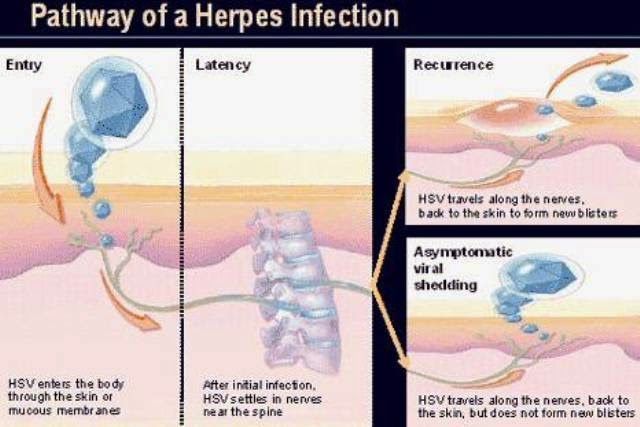
Blood and lymphatic system : anemia, thrombocytopenia, leukopenia.
Immune system : anaphylaxis.
Mental and nervous system disorders Headache, dizziness, agitation, confusion, tremor, ataxia, dysarthria, hallucinations, psychotic symptoms, convulsions, drowsiness, encephalopathy, coma. The above neurological reactions are generally reversible and usually occur in patients with renal insufficiency or other risk factors (see SPECIAL INSTRUCTIONS).
Respiratory and chest organs : shortness of breath.
Digestive system : nausea, vomiting, diarrhoea, abdominal pain.
Hepatobiliary system : reversible increase in bilirubin and liver enzymes, jaundice, hepatitis.
Skin and subcutaneous tissues : pruritus, rash (including photosensitivity), urticaria, increased diffuse hair loss. Since hair loss can be associated with a large number of diseases and drugs, a clear association with acyclovir has not been identified.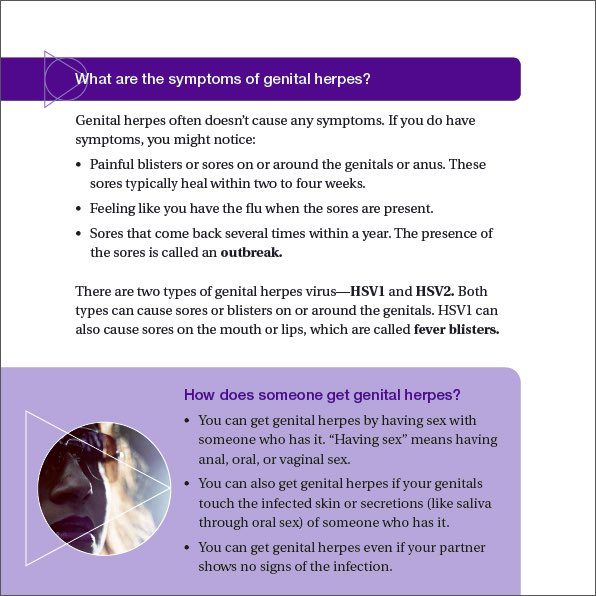 Angioedema.
Angioedema.
Kidneys and urinary system : increased blood urea and creatinine, acute renal failure, pain in the kidneys. Kidney pain may be associated with renal failure and crystalluria.
General disorders : fatigue, fever.
Aciclovir is eliminated from the body mainly by renal clearance, therefore, in patients with renal insufficiency, the dose should be reduced (see ADMINISTRATION). Elderly patients are also more likely to have impaired renal function, so a dose reduction may be required for this group of patients. Patients with renal insufficiency and elderly patients are risk groups for neurological side effects and therefore should be closely monitored for these adverse reactions. These reactions have been reported to be generally reversible upon discontinuation of treatment (see SIDE EFFECTS).
Particular attention should be paid to maintaining an adequate level of hydration in patients receiving high doses of acyclovir.
The period of pregnancy and lactation. There was no increase in the number of birth defects in children whose mothers used acyclovir during pregnancy, compared with the general population. However, Gerpevir tablets should be used when the potential benefit of the drug to the mother outweighs the possible risk to the fetus.
There was no increase in the number of birth defects in children whose mothers used acyclovir during pregnancy, compared with the general population. However, Gerpevir tablets should be used when the potential benefit of the drug to the mother outweighs the possible risk to the fetus.
After oral administration of 200 mg of acyclovir 5 times a day, acyclovir passes into breast milk at concentrations of 0.6-4.1% of the corresponding level of acyclovir in blood plasma. Potentially, a child fed with this milk can absorb acyclovir at a dose of up to 0.3 mg/kg of body weight per day. Therefore, acyclovir should be administered to breastfeeding women with caution, taking into account the risk/benefit ratio.
The ability to influence the reaction rate when driving vehicles or working with other mechanisms. Consideration should be given to the clinical status of the patient and the side effect profile of the drug when deciding whether to drive or use machines. Clinical studies of the effect of acyclovir on the reaction rate when driving vehicles or operating other mechanisms have not been conducted. In addition, the pharmacology of acyclovir does not give reason to expect any negative effect.
Clinical studies of the effect of acyclovir on the reaction rate when driving vehicles or operating other mechanisms have not been conducted. In addition, the pharmacology of acyclovir does not give reason to expect any negative effect.
No clinically important interactions of acyclovir with other drugs have been identified.
Aciclovir is excreted predominantly unchanged by the kidneys by tubular secretion, therefore any drugs that have a similar mechanism of release may increase the concentration of aciclovir in blood plasma. Probenecid and cimetidine increase T ½ of acyclovir and AUC.
When used simultaneously with immunosuppressants in patients after organ transplantation, the plasma level of acyclovir and the inactive metabolite of the immunosuppressive drug also increases, but given the wide therapeutic index of acyclovir, dose adjustment is not required.
symptoms . Acyclovir is only partially absorbed in the gastrointestinal tract.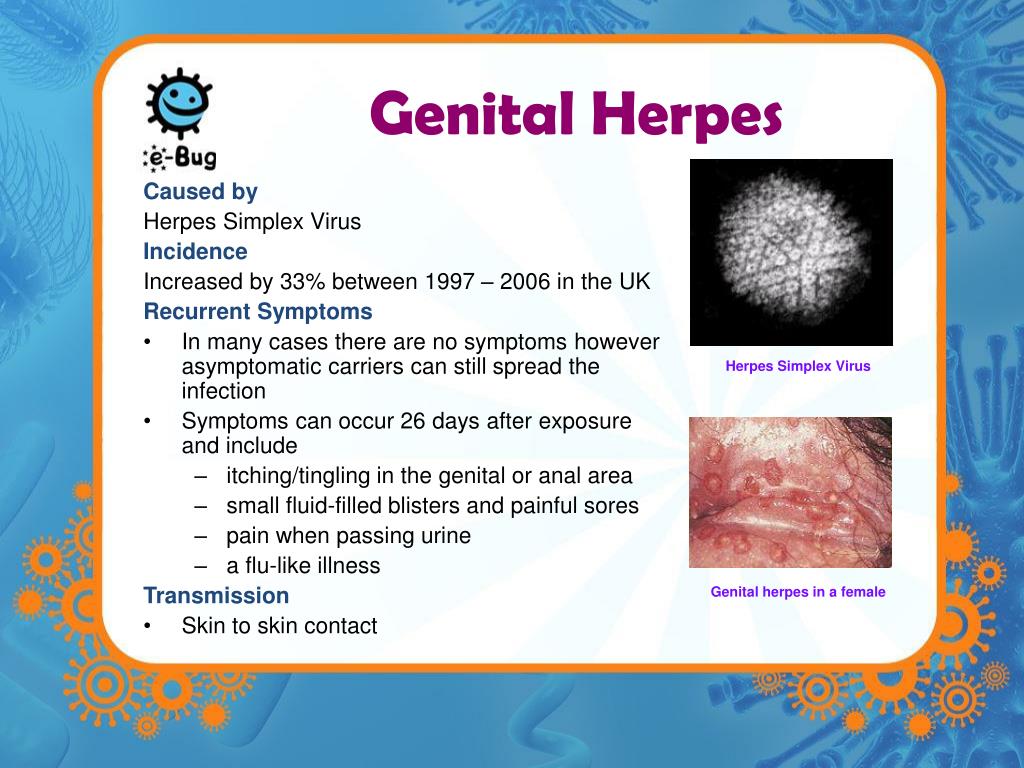 Accidental ingestion of up to 20 g of acyclovir orally by patients did not cause a toxic effect. In case of accidental repeated overdose of oral acyclovir within a few days, gastroenterological (such as nausea and vomiting) and neurological symptoms (headache and confusion) occur. With an overdose of intravenous acyclovir, the level of creatinine in the blood serum, urea nitrogen in the blood increases and, accordingly, renal failure develops. Neurological manifestations of overdose may include confusion, hallucinations, agitation, convulsions and coma.
Accidental ingestion of up to 20 g of acyclovir orally by patients did not cause a toxic effect. In case of accidental repeated overdose of oral acyclovir within a few days, gastroenterological (such as nausea and vomiting) and neurological symptoms (headache and confusion) occur. With an overdose of intravenous acyclovir, the level of creatinine in the blood serum, urea nitrogen in the blood increases and, accordingly, renal failure develops. Neurological manifestations of overdose may include confusion, hallucinations, agitation, convulsions and coma.
Treatment . The patient must be carefully examined to identify symptoms of intoxication. Since acyclovir is well excreted by hemodialysis, the latter should be used in case of overdose.
in original packaging at a temperature not exceeding 25 °C.
| Anogenital herpes infection, unspecified | ICD A60.9 |
| Chicken pox without complications | ICD B01. 9 9 |
| Herpetic eczema | ICD B00.0 |
| Herpetic infections of the genital organs and urinary tract | ICD A60.0 |
| Herpetic vesicular dermatitis | ICD B00.1 |
| Herpetic gingivostomatitis and pharyngotonsillitis | ICD B00.2 |
| Disseminated herpes zoster | ICD B02.7 |
| Other forms of herpetic infections | ICD B00.8 |
| Other forms of keratitis | ICD h26.8 |
| Keratitis and keratoconjunctivitis due to herpes simplex virus | ICD h29.1 |
| Keratoconjunctivitis | ICD h26.2 |
| Molluscum contagiosum | ICD B08.1 |
| Intercostal neuropathy | ICD G58. |

 7 billion people under age 50 (67%) globally have herpes simplex virus type 1 (HSV-1) infection, the main cause of oral herpes.
7 billion people under age 50 (67%) globally have herpes simplex virus type 1 (HSV-1) infection, the main cause of oral herpes. It can develop only once in a lifetime.
It can develop only once in a lifetime.